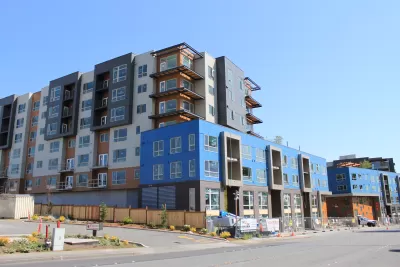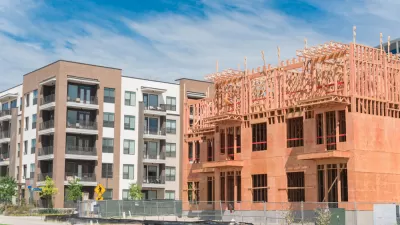In an insightful article, William Fulton unpacks the supply-demand cycle driving costs skyward in certain areas. To address the problem, new construction needs an unprecedented level of diversity.

William Fulton discusses the factors motivating today's frustrated NIMBYs and development advocates. Is there a way to keep housing prices reasonable in major cities? While some progressive voices call for more housing to ease prices, others argue that "the trend toward high housing cost must be countered with less housing construction. Or at least less market-rate housing construction." The question is whether (in the case of "luxury" housing) supply can create its own demand.
Of course, luxury housing and market-rate housing mean pretty much the same thing in many urban centers. As a result, "a new generation of people – not quite NIMBYs, but not quite not NIMBYs – are arguing that you shouldn't build more housing because housing is already really expensive."
In desirable, vibrant locales, the very-rich purchase existing large houses, leaving new development to cater to upwardly-mobile professionals. Any new construction just encourages more of the well-off to move in, doing little for those making under three figures. "To a local community activist, it feels like a no-win."
Fulton suggests a fix: true diversity in housing types, from penthouses to boarding houses. If a city can offer housing to match the diversity of those who want to live there, the luxury housing bubble might deflate.
FULL STORY: Insight: Does Supply Create Its Own Demand?

Planetizen Federal Action Tracker
A weekly monitor of how Trump’s orders and actions are impacting planners and planning in America.

Maui's Vacation Rental Debate Turns Ugly
Verbal attacks, misinformation campaigns and fistfights plague a high-stakes debate to convert thousands of vacation rentals into long-term housing.

Restaurant Patios Were a Pandemic Win — Why Were They so Hard to Keep?
Social distancing requirements and changes in travel patterns prompted cities to pilot new uses for street and sidewalk space. Then it got complicated.

In California Battle of Housing vs. Environment, Housing Just Won
A new state law significantly limits the power of CEQA, an environmental review law that served as a powerful tool for blocking new development.

Boulder Eliminates Parking Minimums Citywide
Officials estimate the cost of building a single underground parking space at up to $100,000.

Orange County, Florida Adopts Largest US “Sprawl Repair” Code
The ‘Orange Code’ seeks to rectify decades of sprawl-inducing, car-oriented development.
Urban Design for Planners 1: Software Tools
This six-course series explores essential urban design concepts using open source software and equips planners with the tools they need to participate fully in the urban design process.
Planning for Universal Design
Learn the tools for implementing Universal Design in planning regulations.
Heyer Gruel & Associates PA
JM Goldson LLC
Custer County Colorado
City of Camden Redevelopment Agency
City of Astoria
Transportation Research & Education Center (TREC) at Portland State University
Jefferson Parish Government
Camden Redevelopment Agency
City of Claremont





























